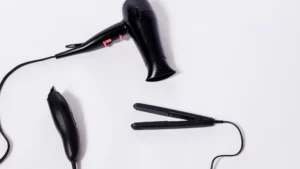Embarking on the transformative journey of NeoGraft hair restoration requires a nuanced understanding of the procedure, its merits, and potential pitfalls. In this comprehensive guide, we delve into the intricacies of NeoGraft, unveiling the step-by-step process, exploring its pros and cons, costs, and shedding light on the realities behind the marketing hype.
What is a NeoGraft Hair Transplant?
NeoGraft hair restoration can be explained as a semi-automated FUE (Follicular Unit Extraction) method. During the NeoGraft technique, hair follicles from the donor area are extracted using a wand by suction. The piston engine of this wand applies pneumatic pressure to the scalp.
NeoGraft hair restoration involves a meticulous and sophisticated process that ideally combines cutting-edge technology with surgical finesse. Let’s have a closer look at the step-by-step intricacies of the NeoGraft procedure, shedding light on each phase’s significance and the innovative techniques employed:
Step 1. Extraction Phase with Automated Pneumatic Pressure
The NeoGraft hair restoration process initiates with the extraction phase, leveraging automated pneumatic pressure. Using a specially designed wand, the system gently suctions individual hair follicles from the donor area. This automated approach ensures a precise and efficient extraction, minimizing the risk of trauma to the follicles. The pneumatic pressure plays a crucial role in delicately harvesting follicular units, setting the foundation for the subsequent stages of the procedure.
Step 2. Simultaneous Incision and Implantation with a Special Device
NeoGraft distinguishes itself by incorporating a unique device that facilitates both the incision and implantation phases simultaneously. Unlike traditional methods where these steps are distinct, NeoGraft’s integrated approach streamlines the process. The special device makes incisions with precision and implants grafts in real-time, optimizing efficiency and reducing the overall duration of the surgery. This innovative method enhances the accuracy of graft placement, contributing to a more natural and aesthetically pleasing outcome.
Step 3. Controlled Pneumatic Pressure for Graft Insertion
The final stage of the Neograft hair restoration process involves the controlled application of pneumatic pressure to insert the harvested grafts into the recipient area. This controlled pressure ensures a uniform and meticulous placement of grafts, aligning with the natural growth pattern of the existing hair. By carefully orchestrating the insertion process, NeoGraft aims to achieve optimal graft survival rates and promote a seamless blend between transplanted and existing hair. The controlled pneumatic pressure represents a key element in the finesse of the procedure, emphasizing the commitment to achieving both precision and aesthetic excellence in the final results.
NeoGraft Hair Restoration in Comparison With Other Techniques
A frequently asked question in the realm of NeoGraft hair restoration revolves around its workings in comparison to traditional FUE or robotic Artas procedures. Let’s delve into the nuances of these techniques to provide a comprehensive understanding of their similarities and distinctions.
NeoGraft vs FUE
FUE is a manual hair transplant method, and it’s considered to be the most used method in the world. Follicular Unit Extraction (FUE hair transplant) is an advanced hair transplant method that involves individual extraction of hair follicles from the donor area. This minimally invasive procedure avoids a linear scar, offering natural-looking results. FUE is known for its precision, reduced discomfort, and suitability for smaller transplant areas, providing patients with effective hair restoration.
NeoGraft Hair Transplants can, as we stated above, be described as a semi automated FUE. Unlike FUE, doctors do not manually make incisions on the scalp during a NeoGraft hair restoration. Instead, a special device is used to both make the incisions and implant the grafts simultaneously. Finally, this tool again applies controlled pneumatic pressure to insert the grafts into the scalp.
NeoGraft vs Artas
As we have discussed above NeoGraft involves some manual aspects. Artas, on the other hand, is a hair transplant technique utilizing a robotic device that independently performs the hair grafting process without human intervention.
While robotic hair transplant may seem ideal due to the robot’s stamina during long procedures, it lacks the skills and nuanced vision of human surgeons in fully executing the procedure. Additionally, Artas is noted for having a larger punch size compared to other hair transplant techniques like FUE and NeoGraft, which can result in visible scarring.
Am I a Candidate for A NeoGraft Hair Restoaration?
Determining suitable candidates for NeoGraft involves a careful consideration of factors related to hair loss, overall health, and the presence of healthy donor hair. The procedure is well-suited for individuals with specific characteristics that make them ideal candidates.
- One important criterion is the presence of areas affected by balding or hair thinning. NeoGraft hair restoration is adaptable and can effectively address various patterns of hair loss, providing a practical solution for individuals seeking to enhance density in specific regions.
- Equally crucial is the availability of sufficient healthy donor hair. To be considered for NeoGraft, patients must have areas on the scalp with robust and healthy hair follicles that can be harvested for transplantation. The quality and quantity of donor hair are key determinants in achieving successful and natural-looking outcomes.
Ultimately, NeoGraft candidacy is determined through a comprehensive evaluation that takes into account the unique circumstances of each individual. It is not solely dependent on gender or the mere presence of hair loss but rather considers the specific characteristics and health factors of the patient. The goal is to ensure that NeoGraft is an appropriate and effective solution tailored to the individual’s needs and expectations.
How Much does a NeoGraft Hair Restoration Cost?
The cost of NeoGraft hair restoration can vary significantly depending on several factors, including the geographic location, the experience and reputation of the surgeon, the extent of hair loss, and the number of grafts needed. On average, NeoGraft procedures are more costly than regular FUE hair transplants and can range from $5,000 to $15,000 or even more.
It’s essential to consider that the cost is often calculated per graft, and the total number of grafts required depends on the individual’s specific case and desired outcome. During a consultation with a hair restoration specialist, they can assess your unique situation, discuss your goals, and provide a more accurate estimate of the cost based on the number of grafts needed.
Additionally, other factors, such as the clinic’s facilities, the surgeon’s expertise, and post-operative care, can influence the overall cost. It’s crucial to thoroughly research and consult with reputable professionals to ensure a comprehensive understanding of the procedure, associated costs, and potential financing options.
NeoGraft Hair Restoration in Turkey
As readers have seen in our hair transplant Turkey reviews relatively few clinics are using NeoGraft at the moment. One of the reasons for this is the cost, both for the clinic and, most of all, for the patient.
NeoGraft Hair Restoration: The Importance of Finding a Good Team
While robotic hair transplant technology, along with other heavily advertised devices, has become a focal point in hair restoration, it’s important to point out that there sometimes exists a gap between marketing claims and the reality of these procedures.
Behind the allure of robotic and suction-assisted devices, the fundamental requirement is a competent doctor and a skilled team. The assumption that owning these devices equates to expertise and guaranteed results is a fallacy. The success of any hair transplant procedure is contingent on the proficiency of the medical team operating the technology.
The intricate nature of hair loss and restoration surgery demands more than just technical training on operating machines. Understanding the aesthetic nuances, having a deep awareness of hair loss patterns, and possessing good cosmetic sense are crucial elements that cannot be substituted by machine operation alone. Lack of comprehension in these areas can result in dissatisfaction among patients. At Hairlinetransplantturkey.com we always encourage you to do research and pick a hair transplant clinic with good and unbiased reviews.














